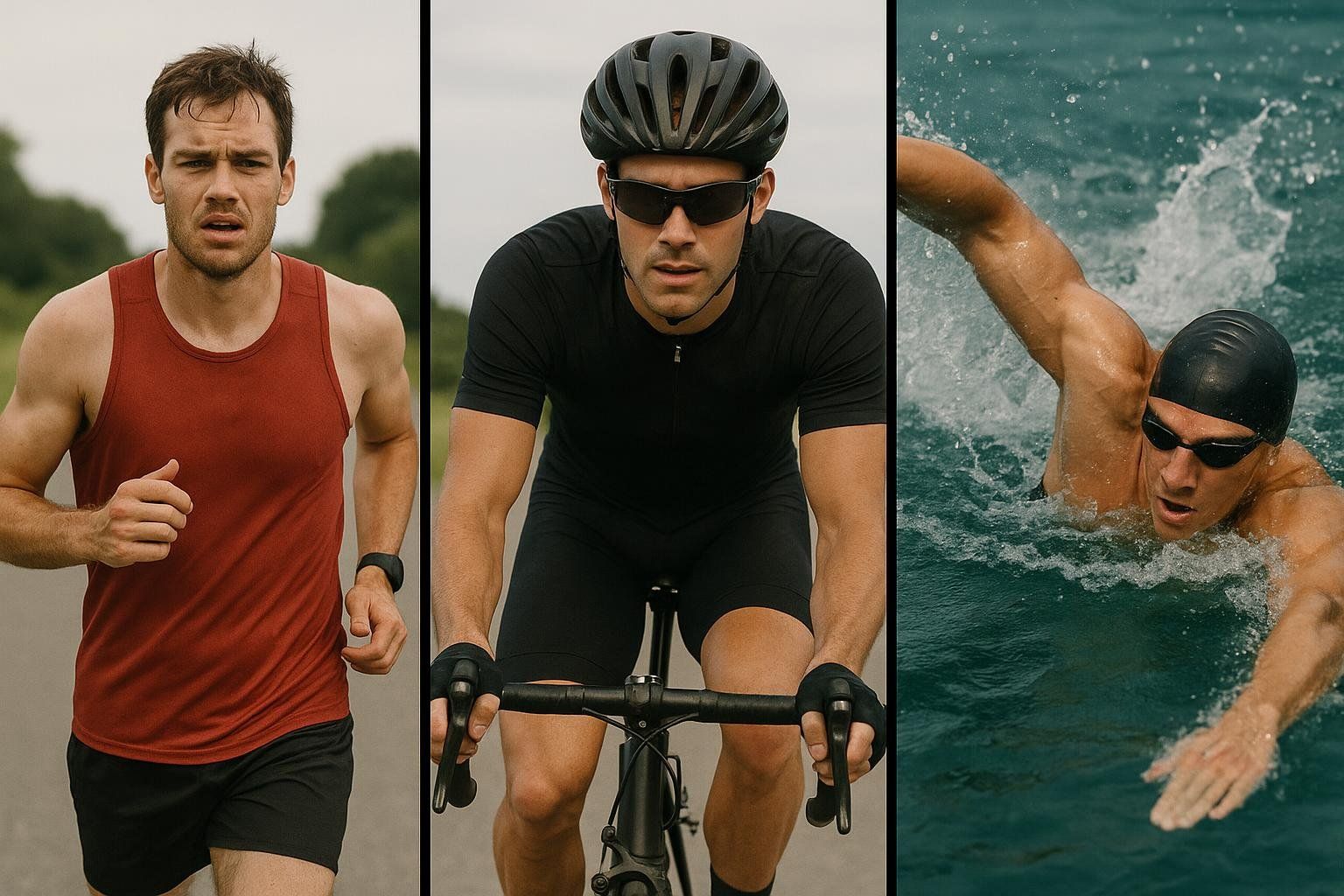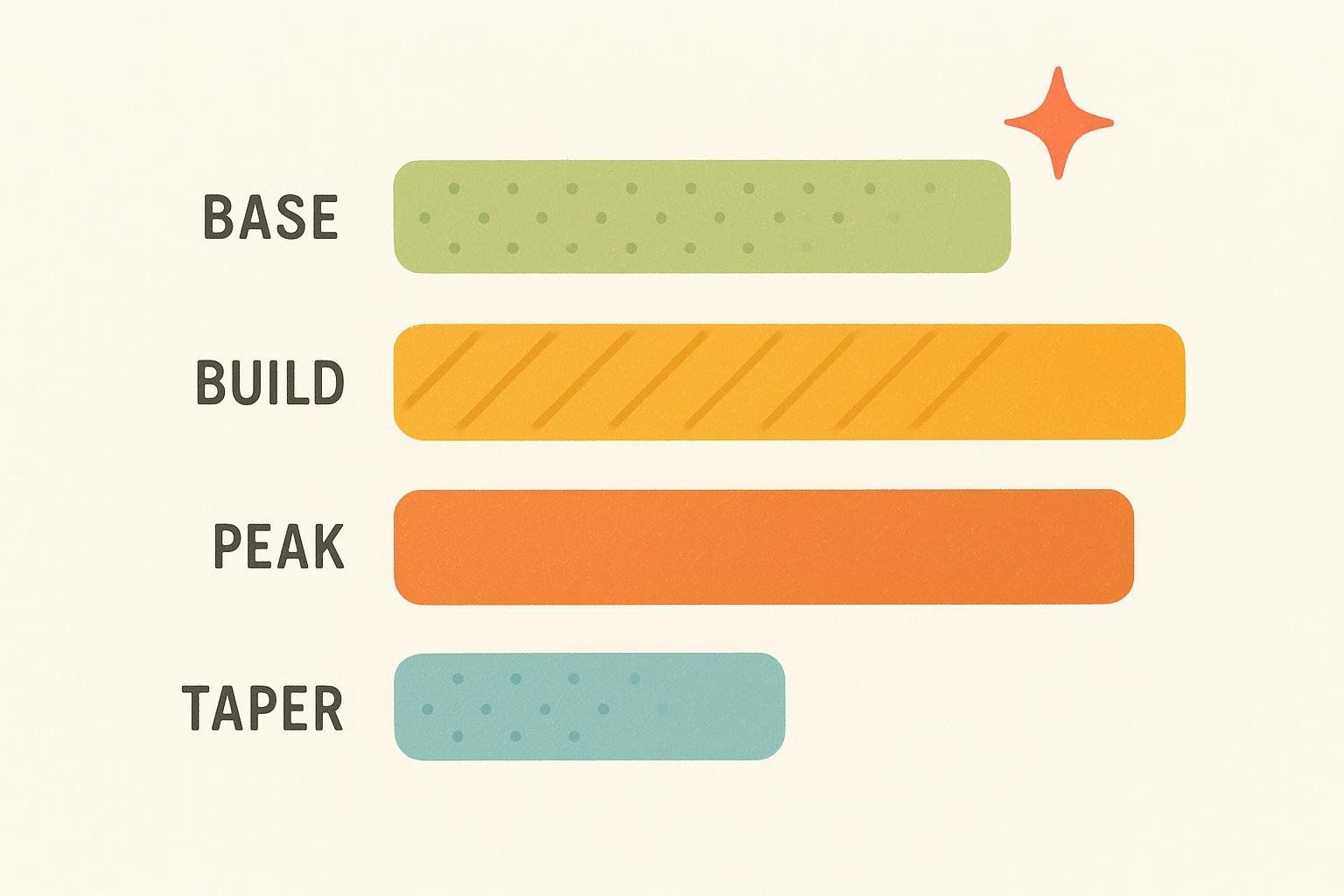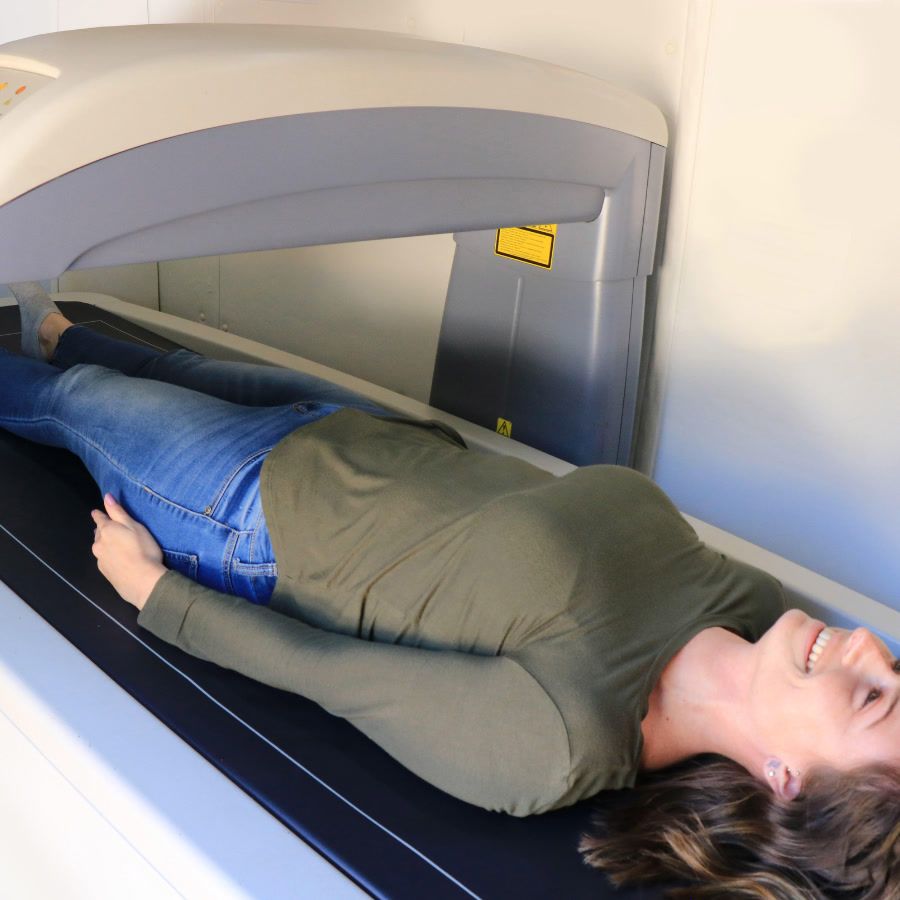Ironman Distances: Swim, Bike, Run Breakdown

Ironman Distances Explained: Swim, Bike, Run Breakdown in Miles & Kilometres
Last updated: June 4, 2025
You’ve heard the lore: “Swim 2.4 miles, bike 112 miles, run 26.2 miles—brag for the rest of your life.”
But what do those numbers really look like on the road (or in the water)? Whether you’re a first-time triathlete, a 70.3 veteran stepping up, or a coach hunting for a share-worthy reference, this guide lays out the full Ironman distances, pace benchmarks, and training implications—all in one place.
Quick-Reference: Full Ironman Distances
| Discipline | Miles | Kilometres |
|---|---|---|
| Swim | 2.4 mi | 3.9 km |
| Bike | 112 mi | 180.2 km |
| Run | 26.2 mi | 42.2 km |
| Total | 140.6 mi | 226.3 km |
Official imperial distances from IRONMAN.com. Kilometre values are precise conversions (1 mi = 1.60934 km), aligning with common race-reporting conventions.
Why These Numbers? A 2-Minute History Lesson
The now-famous Ironman distances were set in 1977 when U.S. Navy Commander John Collins proposed linking three existing Oʻahu events—all measured in miles: the 2.4-mile Waikiki Roughwater Swim, the 112-mile Around-Oahu Bike Race (shortened from 115), and the 26.2-mile Honolulu Marathon. Their combined mileage—140.6—became the blueprint for every full Ironman that followed (Wikipedia). Metric equivalents were added later for international signage and reporting.
Ironman vs Other Triathlon Distances
| Event | Swim | Bike | Run | Total Mileage |
|---|---|---|---|---|
| Sprint | 0.47 mi (750 m) | 12.4 mi (20 km) | 3.1 mi (5 km) | 16 mi |
| Olympic | 0.93 mi (1.5 km) | 24.8 mi (40 km) | 6.2 mi (10 km) | 32 mi |
| Half Ironman (70.3) | 1.2 mi (1.9 km) | 56 mi (90 km) | 13.1 mi (21.1 km) | 70.3 mi |
| Full Ironman | 2.4 mi (3.9 km) | 112 mi (180.2 km) | 26.2 mi (42.2 km) | 140.6 mi |
Coach’s tip: Notice each jump roughly doubles the total mileage. Expect your weekly training load—not just race day—to scale similarly.
Typical Finish Times & Pace Benchmarks
| Athlete Level | Swim Pace | Bike Speed | Run Pace | Finish Window |
|---|---|---|---|---|
| Beginner | 2:30 /100 m | 15–17 mph (24–27 km/h) | 11:00 /mi (6:50 / km) | 13–16 hr |
| Intermediate | 2:00 /100 m | 18–20 mph (29–32 km/h) | 9:00 /mi (5:35 / km) | 11–13 hr |
| Elite/Pro | 1:15 /100 m | 24+ mph (38+ km/h) | 6:00 /mi (3:45 / km) | < 8 hr |

Benchmarks above are generalized estimates based on aggregated Ironman Tracker race data (2019–2024) and common coaching guidelines (e.g., USA Triathlon Level II manuals). Individual performance will vary.
Cut-off rules vary by course but WTC typically enforces 2 hr 20 min for the swim, 10–10.5 hr for swim + bike, and 16–17 hr overall (IRONMAN.com).
Sample Weekly Training Volume for First-Time Ironman
| Phase (Weeks) | Swim yds | Bike mi | Run mi | Focus |
|---|---|---|---|---|
| Base (1–6) | 4,000–6,000 | 80–110 | 15–20 | Technique & aerobic base |
| Build (7–14) | 6,000–8,000 | 110–160 | 20–30 | Long endurance + bricks |
| Peak (15–20) | 8,000–10,000 | 160–220 | 30–40 | Race-specific pace, nutrition rehearsals |
| Taper (21–23) | ↓ 40 % | ↓ 40 % | ↓ 40 % | Freshen legs; maintain intensity |

These volumes outline a time-constrained amateur framework derived from common coaching guidelines for athletes training roughly 10–15 hours per week.
Elite competitors often train significantly more, with weekly volumes tailored by individual coaches and race demands.
Discipline-By-Discipline Tips
Swim (2.4 mi)
- Prioritize bilateral breathing to handle crowds and sighting.
- Draft legally: positioning behind another swimmer can significantly reduce energy expenditure—triathlon coaching literature suggests savings in the 6–10 % range (Triathlete Magazine).
Bike (112 mi)

- Fuel early, fuel often. Aim for 60–90 g carbs/hour—learn more in Fueling for Long-Distance Events.
- Keep power steady; spikes above threshold can compromise your run performance.
Run (26.2 mi)

- Walk aid-stations to protect heart rate.
- Use a run-walk ratio in the opening 10 mi if temps soar—see more pacing advice in Training Tips for Runners.
Hydration & Electrolytes
Sports physiology research indicates that even mild dehydration (loss of more than 2 % of body weight) can significantly impair power output and overall performance. Dial in a sweat-rate test and review our Hydration Strategies for Endurance Athletes before race week.
Track Your Body Composition as You Train
High-volume endurance work reshapes your physique. Periodic body-composition check-ins—such as quarterly BodySpec DEXA scans—give objective feedback on fat loss, muscle preservation, and bone health so you can adjust the plan long before race day.
Ramp-up miles burn calories—but also stress muscle tissue and bones. A BodySpec DEXA scan lets you:
- Verify that weight loss is mostly fat, not hard-earned lean mass.
- Monitor bone-density trends—vital for high-volume runners.
- Fine-tune nutrition if muscle starts slipping.
Book a scan or membership to keep bio-feedback as precise as your power meter.
Frequently Asked Questions
How many total miles is an Ironman?
140.6 miles (226.3 km) across swim, bike, and run.
How does a full Ironman compare to running a standalone marathon?
It’s common for Ironman marathon times to be 10–20 % slower than an athlete’s personal records in standalone marathons, primarily due to accumulated fatigue.
What’s the official cut-off time?
Most Ironman events give athletes 17 hours from the swim start, but some races close at 16 hours. Check your specific event rules.
Can I wear a wetsuit?
Wetsuit legality depends on water temperature and governing rules. Generally permitted below 76.1 °F (24.5 °C) for age-groupers.
Key Takeaways
- Full Ironman = 2.4-mi swim + 112-mi bike + 26.2-mi run.
- Training load scales significantly—plan 15–20 hr weeks at the peak.
- Dial in pacing, fueling, and hydration early to prevent late-race meltdowns.
- Monitoring body composition during high-volume training ensures healthy adaptation and reduces injury risk.
Ready to measure the muscle you’ll carry across that finish line? Schedule your BodySpec scan today and turn every mile into actionable data.


